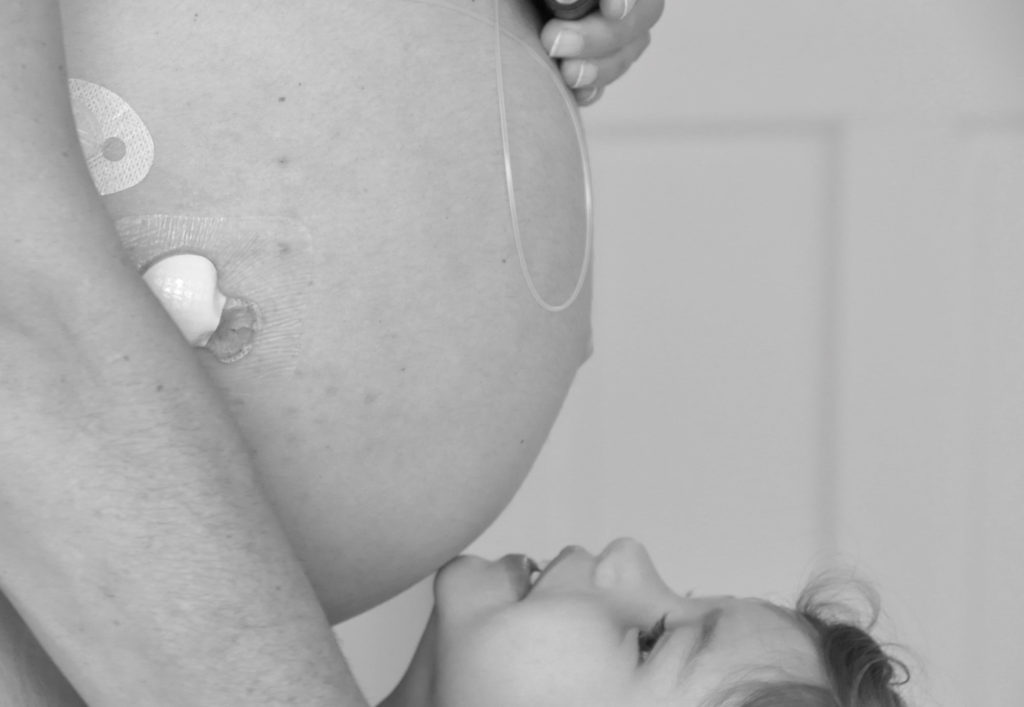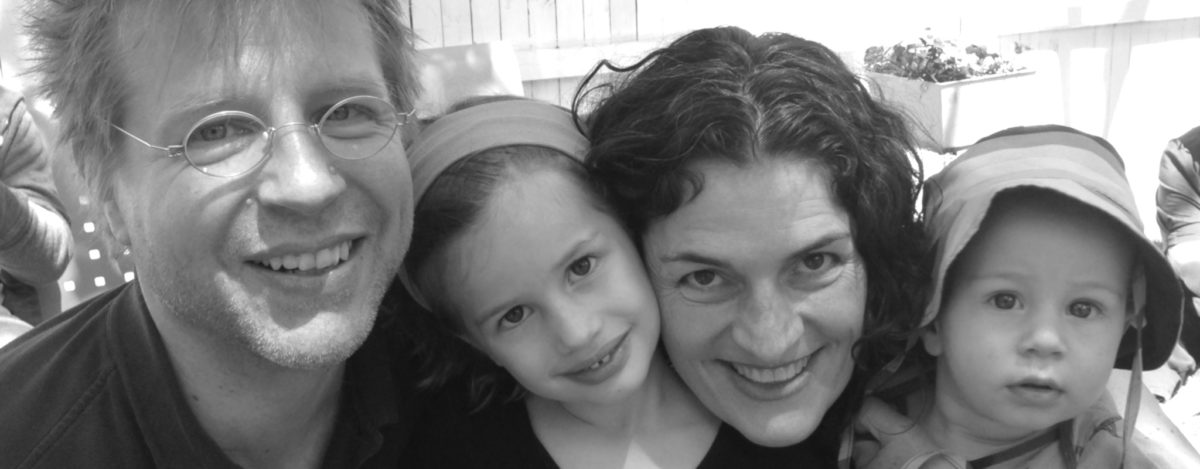Type 1 Diabetes and Pregnancy—Uncharted Territory
At age 3, I was diagnosed with type 1 diabetes. It was the 70s: urine glucose testing, NPH and zero school support. My dad was a doctor, and my mom a teacher and a doer. Early in their lives, both faced hardships and became problem solvers using evidence-based thinking and hard work. Their collective idea was this: if we normalize Jessica’s blood sugar, she will be normal. No nonsense, no excuses. And this was well before The Diabetes Control and Complications Trial, which ran from 1983-1993 and showed that active management meant fewer complications. My parents didn’t wait for the proof. They had an intuitive sense of the science, applied it to life and went for it. They were way ahead of the times.
I’m not saying it was easy. My parents were hard-core. When the first home blood glucose (BG) monitor came out, which was the size of a small briefcase, they were so excited! They immediately took to schlepping that thing around and checking me up to 10 times a day. It was a cumbersome addition to a little kid’s life. My mom had me get out of the pool midway through swim team practice to check and usually eat a fig bar to prevent an NPH low. Later, as a teenager, I was not allowed behind the wheel without a reading between 80 and 140. I fought back and pulled the angry “it’s not fair” card a lot!
But I survived childhood with a set of tools no one could take away from me. In addition to my wise parents, I had at my side the brilliant and compassionate Dr. Lois Jovanovič, an endocrinologist and pioneer in diabetes in pregnancy research. She was my cheerleader who taught me the value of an A1c<7, and personally helped me start an insulin pump almost three decades ago. She showed me how to cut a hole in my dress pockets to feed the tubing through so I could hide my bulky “external pancreas” as I called it. At the time, I didn’t fully know of Dr. Jovanovič’s contributions. She had already been changing the world with her research: showing that women with type 1 could have normal pregnancies and healthy babies.
Though pregnancy wasn’t my priority at the time, my parents were paying attention to her research. They told me that as long as I actively managed my blood sugars, I could do anything: professionally, personally and as babies go. Somehow I never doubted that. I traveled to places like Cuba and Bonaire and Vietnam, often with lengths of time by myself. I went skydiving (okay, maybe I never told them about that). I had lots of great friends, and did marathons as a guide for disabled athletes. I became a midwife and devoted myself to my work. Over the years, I had the tremendous honor of delivering more than 1300 babies and caring for thousands of women. My type 1 was in maintenance mode: managed but not discussed.
Then came my mid 30s. I began to look deeply at my life as many women do around that age. I realized how different I felt from my friends. Most of them had children toddling about. My single friends became a smaller, closer group. As we talked about our dreams, I felt a new heaviness having type 1, something that alienated me from the conversation. Was I damaged goods? Was what my parents and Dr. Jovanovič believed actually true: that I could do anything? If these “normal” friends of mine were worried, shouldn’t I be doubly worried?
I finally admitted something I had been blocking out: in my work, I saw difficult outcomes for women with diabetes. I delivered huge babies, I witnessed C-sections for babies who didn’t fit. I saw worsening complications, and I even saw babies die. Thinking about my experiences brought me to a dark place. I knew if I wanted a baby, I would need more bravery than ever.
And, I needed a partner! What happened next still has me pinching myself. I went to a solo art show in Manhattan’s South Street Seaport, planning to meet the artist. I noticed a huge oil painting of a snickers bar with dozens of real syringes stuck in the canvas. What? This guy must know someone with diabetes because these are insulin syringes! Not until we met for our first date did I discover that the artist, David, had type 1. What were the chances? How many single men with type 1 were there in Manhattan?
As they say, the rest is history. But that doesn’t tell it all. In reality, I had a refreshed sense of faith through David. He called himself my wingman, told me I could do it and boosted my bravery when I needed it most.
Fast-forward a year: we were expecting a baby! Well, a lot happened in that year: marriage, preconception planning, first a molar pregnancy which is incredibly rare, a couple of moves and a ton of intensive, utterly stressful blood glucose management. Welcome to love, marriage and that baby.

I assembled my team: my supportive endocrinologist whom I had seen for more than 10 years, a perinatologist who had taken care of countless women with type 1, and a midwife friend who had long understood me. Despite my fears, I was confident. I had this stellar team, a deep understanding of my type 1, my decade of experience in OB, plus the support of David. I felt prepared. What could be unexpected?
Well, I was surprised that nearly every day I seemed to face a challenge, I knew nothing about it. First up, changes in insulin requirements. The high risk OBs were not familiar with pump downloads and my endocrine office didn’t know about the stages of pregnancy and the effect of fluctuating hormones on blood sugars.
I realized that stellar as they were, the specialized medical fields spoke completely different languages. It was as if one spoke Spanish and the other Portuguese. Who could blame them? They came from different places, and had different areas of expertise. They may have gone to the same medical school and practiced in the same hospital, but somewhere along the way in their specialization, the languages diverged. Were they irreconcilable? Or could they learn to understand one another? Could they learn to see the whole person: me, a woman pregnant with type 1?
There is no official type 1 in pregnancy language. I ended up using my parents’ system: educated intuition without hard proof. But now I was doing that in pregnancy! I looked at my own pump downloads and made almost daily adjustments. I correlated hormonal changes I was aware of as a midwife, with anticipated insulin dose adjustments. I stayed super low-carb after finding there was no science behind the 175 gram daily carbohydrate recommendation for pregnancy.
Despite all this, I developed pre-eclampsia in my second trimester. I knew I would need steroid injections to expedite fetal lung development. I was aware that steroids caused insulin resistance. I did research to learn more. I aggressively upped basals, almost doubling my daily doses in the course of a few days. No one told me to do that. No one asked me what I was doing. Clearly, there were no medical guidelines for where I was.
I checked obsessively. But no matter how hard I tried to manage, I still had some highs. As any mother would, I worried what damage those highs might have caused our precious unborn baby? There were no clear answers.
Wanting to keep my pump in labor, I planned to actively manage it with David’s support. I did keep it, but not without a series of negotiations between endocrine, obstetrics, nursing and hospital administration. To make a very long labor story short, I pushed out our beautiful baby girl: a miracle!
But I have never forgotten my fears. Even in the early exhilaration of holding Miriam, I began rethinking my experience. How would it have gone if I hadn’t delivered hundreds of babies, had 35 years of self-management experience and a partner I could call my diabetes doula? And what was happening to the rest of the type 1 world?
Over months, I wouldn’t let go of these ruminations and eventually David said to me: you need to go out there and help. It is a crime to not share your knowledge. You are the perfect person to work on a new language, one that makes sense of diabetes in pregnancy.
I left my midwifery job of over a decade and went to work at the Naomi Berrie Diabetes Center of Columbia. I was saturated with diabetes and learned from a world-renowned group of endocrinologists and educators.
As a certified diabetes educator (CDE), I returned to work in obstetrics, now exclusively with women who have diabetes. I wrote the guidelines for diabetes in pregnancy used in the public hospital system of NYC. I also educate healthcare providers on diagnosis and management of diabetes in pregnancy. We are making some great changes!
As part of my work, I scour the research daily. While I am interested in all things diabetes in pregnancy, I try not to be disheartened that our special autoimmune disease is rarely in the spotlight. We know type 1 and type 2 have little in common. We know our management is different, our metabolisms are different, our complications (or lack of them) are different. Why would our pregnancies be the same? How can any study of gestational diabetes or type 2 in pregnancy fully apply to type 1?
My interest in pregnancy with type 1 led me to join forces with Anna Floreen at Glu and T1D Exchange. Together, we wrote a survey for women with type 1 who are pregnant or have had babies in the last 10 years. It is approved by the Institutional Review Board, so we plan to publish the results, present them to the medical community and share them with you.
This is where your stories come in! To fill the research gap, we need every story. In fact, stories are the research. Please contribute yours by taking the survey. This is your chance to meaningfully contribute to medical knowledge we so desperately need.
To all women who have bravely experienced pregnancy with type 1, here’s to you for changing the world, one experience at a time.
With gratitude and in solidarity,
Jessica
Have a type 1 pregnancy question? Ask Jessica!





